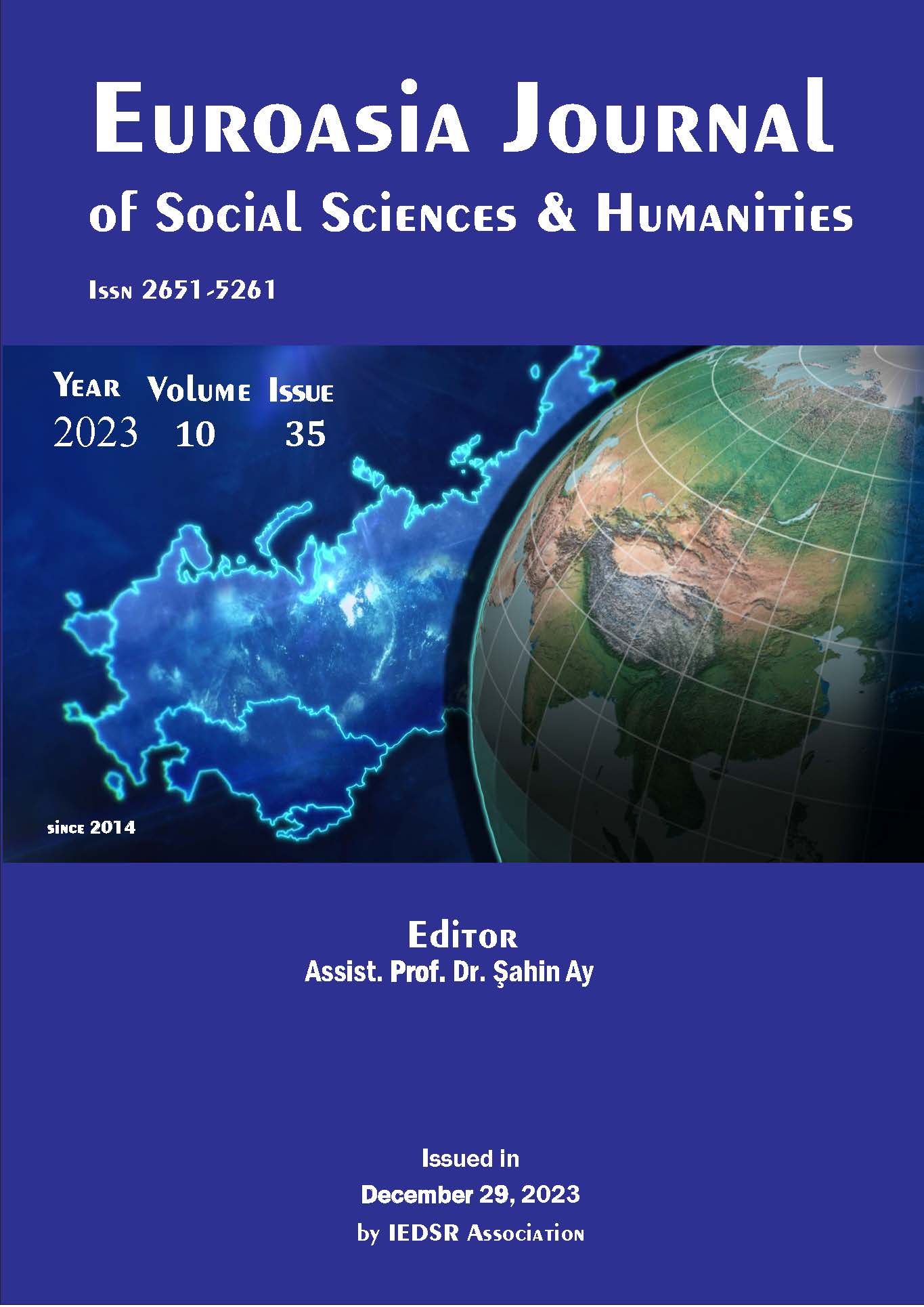Social and Cultural Effects of Migration on Human Society Countries
DOI:
https://doi.org/10.5281/zenodo.10443004Keywords:
Museum, cultural heritage, archeology, migration museum, migrationAbstract
Mankind has created countless works that express themselves and their civilizations, both in line with their beliefs and in line with their values, while realizing their social, political and economic orders within the primitive state orders.Throughout the ages, human beings have had to leave their villages, cities and countries due to reasons such as war and natural disasters, following the desire to reach more suitable living conditions. In recent years, the war in Syria, Iraq, Afghanistan, Libya and Ukraine has forced more than 6 million people to leave their countries. As a result of the earthquake in Turkey in 2023, more than 1 million people, whose homes, workplaces, schools and hospitals were destroyed, migrated from their cities to other cities.Many immigrants who set out to migrate to Europe from Africa every year in order to have better living conditions die in the Mediterranean Sea. For this purpose, they even risk their lifes. Many problems await agricultural workers who want to set off from South America and reach America and Canada.Language, accommodation and education of immigrants constitute a major problem. Immigrants create their own private living spaces. They marry citizens of their own city, country. In another country, they are establishing their micro-countries by creating their own micro-habitats. Even after years, immigrants do not give up on the culture, social structure and language characteristics of the countries they come from.The phenomenon of immigration existed in the past. There is today too. It will be in the future.Ensuring inter-country trade and social solidarity can be made possible by reflecting cultural and artistic activities in museums. Countries are doing certain studies on this issue. In this study, the museum of migration is examined and the exhibition of intercultural communication in the museum is discussed. In many migration museums, a global holistic approach has not been followed. While this situation gives rise to an integrative understanding of cultural heritage, it is reflected in the political relations between countries. This study aims to make up for the lack of this subject in the literature and to draw attention within the framework of the literature reviews.
Downloads
References
Abadan-Unat, N. (2017) Bitmeyen Göç: Konuk işçilikten ulus-ötesi yurttaşlığa. İstanbul: Bilgi Üniversitesi Yayınları.
Arango, J.(2000) Explaining. Migration : A Critical View, International Social Science Journal,52(165):283-296.
Develi, E. (2017). 21. YÜZYILDA GÖÇ OLGUSU: ULUSLARARASI GÖÇ TEORİLERİNİN EKONOMİ POLİTİĞİ . Süleyman Demirel Üniversitesi İktisadi ve İdari Bilimler Fakültesi Dergisi , Göç Özel Sayısı , 1343-1353 . Retrieved from https://dergipark.org.tr/en/pub/sduiibfd/issue/53207/706530
Myrdal, G. (1972). Asian drama; an inquiry into the poverty of nations (Vol. 1). Pantheon.
IOM,(2013). Göç terimleri sözlüğü. No:31, 2. Baskı Ed. Richard Perruchoud ve Jillyyanne Redpath- Cross (Türkçe) http:// publications.iom.int/ systemfiles/pdf/ iml31_turkish_2ndedition.pdf ( Erişim tarihi:03.08.2023).
Mabogunje, A. L. (1990). Urban Planning and the Post-Colonial State in Africa: A Research Overview1. African studies review, 33(2), 121-203.
Massey, D.S. vd. (2014)Uluslararsı göç kuramlarının bir değerlendirmesi, Göç Dergisi, 1. (1):11-46.
Portes, A. (2003). Theoretical Convengernces and Empirical Evidence in the Study of Immigrant Tansnationalisim, Internatinal Migration Review, 37 (3):874-892.
Kurekova, L. 2010) Theories of migration: Critical review in the context of the EU East-West flows, CARIM Euro-Mediterranean Consortium for Applied Research on International Migration, Centreal European University.
Toksöz, G. (2006). Uluslararası Emek Göçü. İstanbul: İstanbul Bilgi Üniversitesi.
Downloads
Published
How to Cite
Issue
Section
License
Copyright (c) 2023 EUROASIA JOURNAL OF SOCIAL SCIENCES & HUMANITIES

This work is licensed under a Creative Commons Attribution-NonCommercial 4.0 International License.

